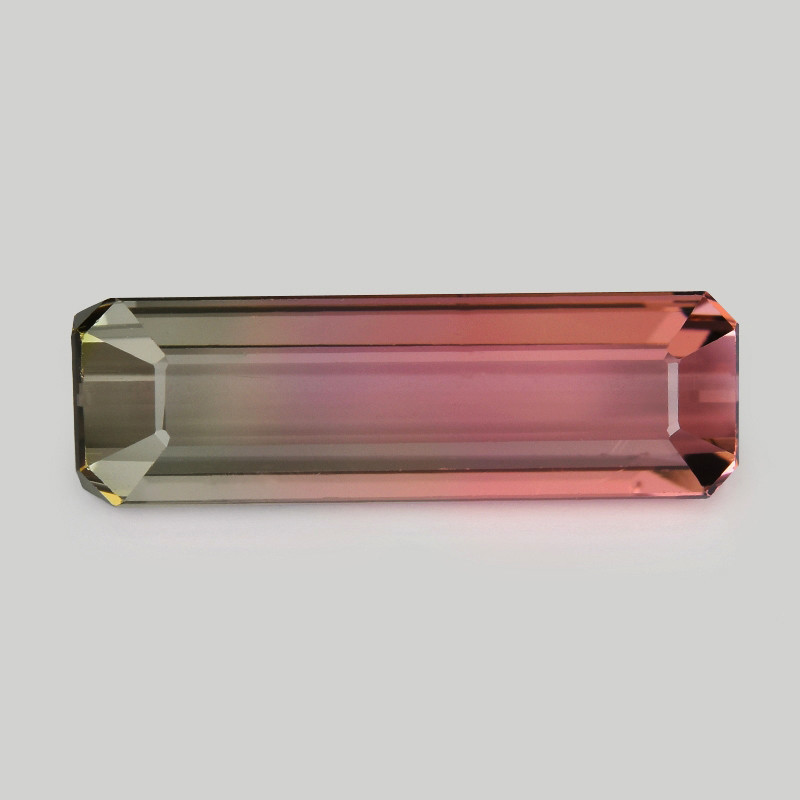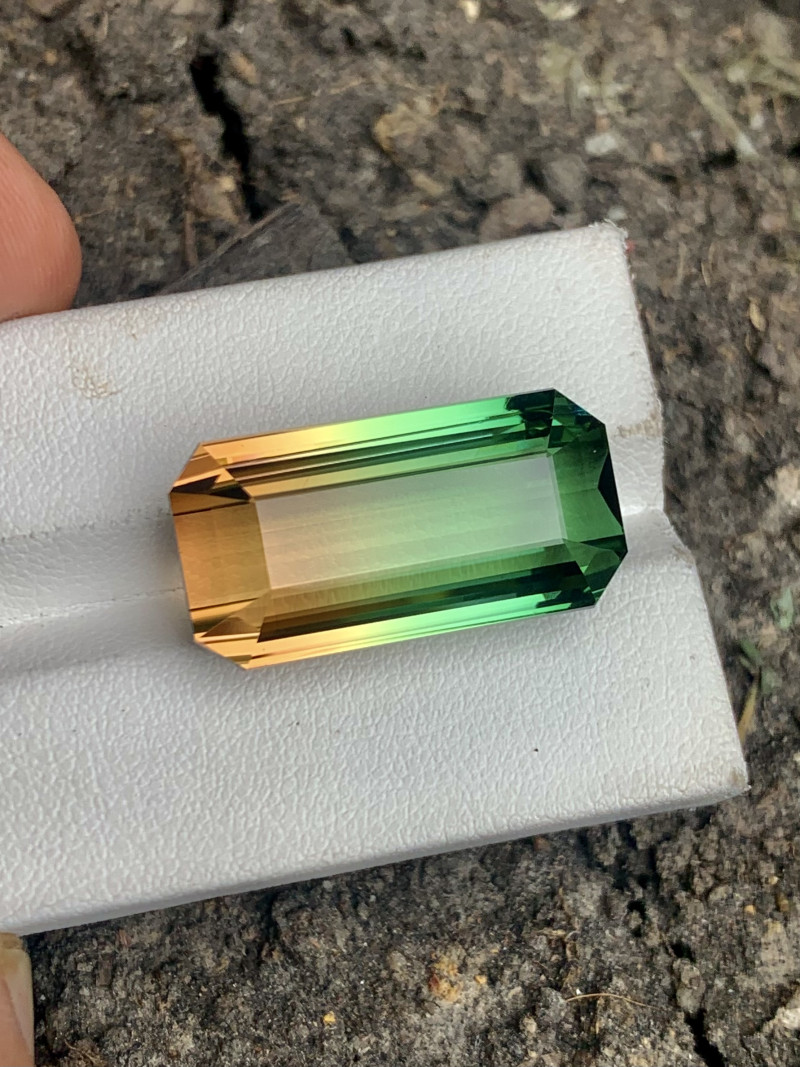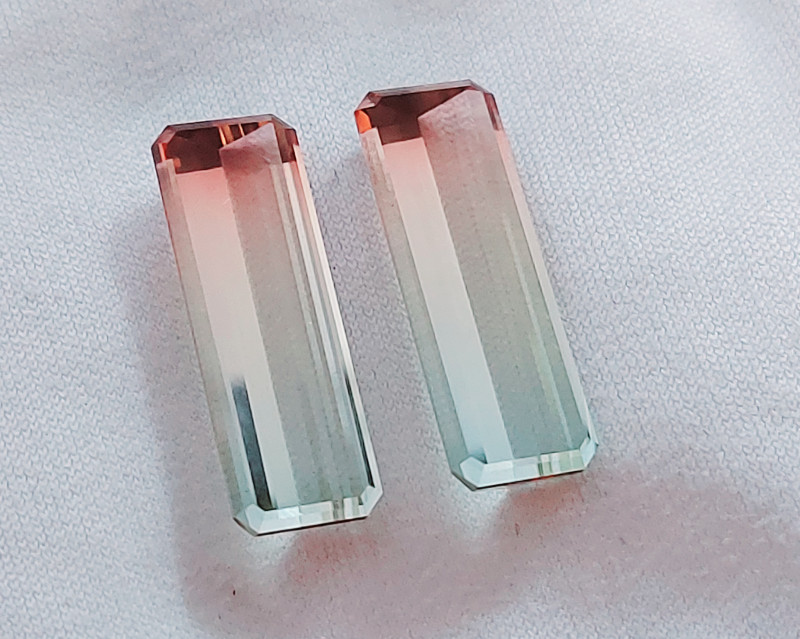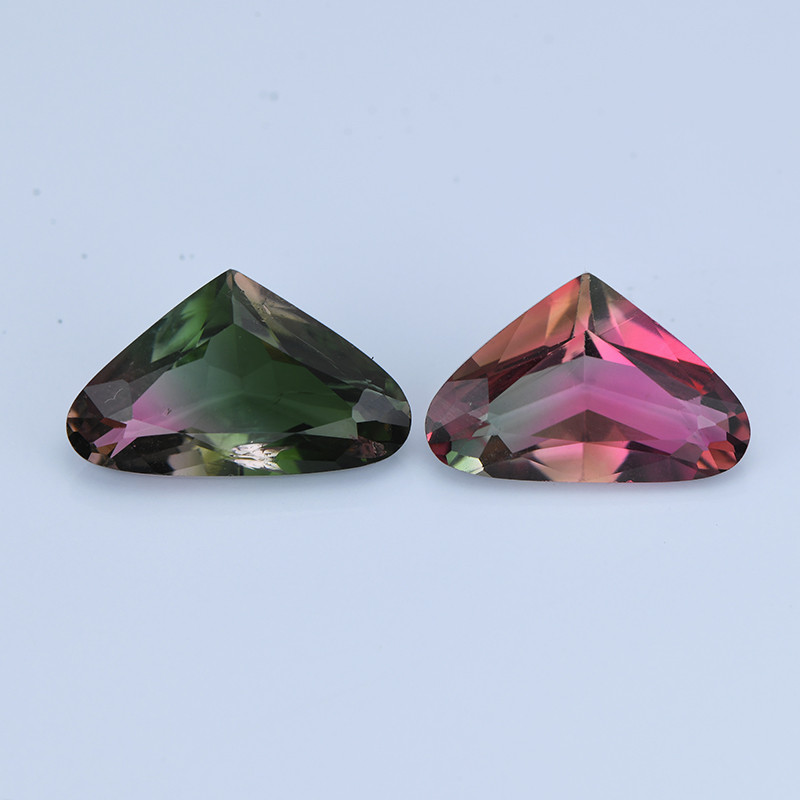
Watermelon Tourmaline Gemstone: Properties, Meanings, Value & More
 Featuring a bright, green outer layer and a pretty pink center reminiscent of watermelon rind, watermelon tourmaline is a fun, aptly named gemstone as unique as its meaning!you
Featuring a bright, green outer layer and a pretty pink center reminiscent of watermelon rind, watermelon tourmaline is a fun, aptly named gemstone as unique as its meaning!you
This rare bi-colored tourmaline is a quintessential example of gems that mimic nature beautifully.
What are the benefits of watermelon tourmaline? Is it expensive? How can you get your own? In this guide, we’ll break down all of this juicy gem’s secrets!
Keep reading to learn all there is to know about watermelon tourmaline’s properties, uses, origins, value, and more.

About Watermelon Tourmaline Stone
Watermelon tourmaline is best known for its lively, vibrant colors resembling a ripe slice of your favorite summertime fruit, but that’s not all it’s known for.
While it’s not a traditional zodiac stone, watermelon tourmaline is said to be particularly supportive of astrology's Gemini and Virgo signs. It’s thought to keep perfection-seeking Virgos from being overly critical and calm the lively minds of restless Geminis.
Watermelon tourmaline also has a planetary connection to Saturn and Venus. Saturn is associated with authority and structure, whereas Venus governs love, desire, and relationships.
I suppose that’s what makes tourmaline the perfect 8th wedding anniversary stone!
Moving on to mineralogy, let’s look at watermelon tourmaline’s identifying traits.

Watermelon Tourmaline Specifications & Characteristics
This semi-precious gemstone is an elbaite variety of concentrically color-zoned (unevenly colored) tourmaline. It’s characterized by its pinkish-red interior and green exterior, often split by a colorless layer in-between.
The mineral’s colors result from elements changing in concentration or composition during the crystal’s growth. In watermelon tourmaline, color-zoning can even provide a visual record of its formation process.
As watermelon tourmaline grows and thickens, it’s exposed to minerals like manganese or lithium. This causes the gem’s colors to shift from a pink center through a pale zone to a green edge.
Watermelon tourmaline has a moderate hardness at 7 to 7.5 on the Mohs mineral hardness scale. It’s a fairly durable stone, but heat and thermal shock (sudden temperature change) can cause fracturing or fading.
Here’s an overview of watermelon tourmaline’s remaining mineral data:
Composition: Aluminum, iron, magnesium, lithium, and potassium
Mohs hardness: 7 to 7.5
Color: Combination of greens, pinks, white, and colorless patterns
Crystal structure: Hexagonal (trigonal)
Luster: Vitreous (glassy) to sub-vitreous
Transparency: Transparent to opaque
Refractive index: 1.62 - 1.64
Density: 2.90-3.40
Cleavage: None observed
Tenacity: Brittle
Fracture: Irregular/Uneven, Conchoidal, Subconchoidal
Streak: White
Luminescence: Fluorescent; Chalky blue or creamy white in SW-UV
Pleochroism: Present, often strong; Can show shifts in bright green or blue
Ready to shift gears and explore watermelon tourmaline’s history?

Watermelon Tourmaline Meaning & History
The word “tourmaline” derives from tōramalli, a Sinhalese (Sri Lankan dialect) word meaning “mixed-colored gems.” And after taking one look at watermelon tourmaline, it won’t be hard to guess how this colorful tourmaline variant got its fruity prefix.
The term “watermelon tourmaline” was coined by famous naturalist George Robley Howe from Norway, Maine (USA). A local news publication used the term in 1910, followed by an international publication in 1911.
After that, the name “watermelon tourmaline” just stuck!
Although tourmaline has been around since ancient times, watermelon tourmaline’s initial unearthing is still unclear. The first recorded mineral discovery dates back to 1902 at the Dunton Quarry mine in Newry, Maine. However, many suggest there’s a chance it was discovered centuries before.
In terms of healing, what is watermelon tourmaline good for?

Watermelon Tourmaline Healing Properties
Most crystals can be used as healing stones to aid in one or more aspects of your wellness.
Watermelon tourmaline benefits your physical, emotional, and spiritual bodies in a multitude of ways.
Physical Healing
Here’s how watermelon tourmaline can support your overall physical health:
Boosts the immune system
Increases metabolism
Alleviates pain
Eases tension
Removes blockages
Speeds up healing
That’s one powerful crystal to add to your medicine kit!
Emotional Healing
Like all tourmalines, watermelon tourmaline helps calm your mind and emotions. It can help you move past trauma and cleanse emotional wounds — replacing those negative feelings with self-confidence, comfort, and a sense of safety.
Next time you encounter an emotional crisis, try wearing a watermelon tourmaline ring to maintain an emotional safety net.
Chakra Healing
Watermelon tourmaline is a powerful chakra stone for the heart chakra. Located right over your breastbone, this energy point is the center of the chakral body and is associated with relationships, love, self-acceptance, and spirituality.
A closed heart chakra manifests in feelings of jealousy, anger, shame, or hatred towards yourself and others. Watermelon tourmaline balances this chakra, inspiring joy, compassion for yourself and others, and deeper spiritual awareness.
So how do you know what a watermelon tourmaline is worth? That’s a matter of grading!

Watermelon Tourmaline Gemstone Properties
Experts grade gemstone quality according to different stone factors. Watermelon tourmaline price per carat is usually based on color, cut, clarity, carat weight, and treatments.
Color
Tourmalines come in every shade of the rainbow, but what is the rarest color of tourmaline? That goes to certain blues, specifically the neon blues of Paraiba tourmaline.
The most popular and coveted watermelon tourmaline has a green outer layer fading into a hot pink core. These are known as “true” watermelon tourmaline and are more expensive than other stones of the same variety.
Interestingly, watermelon tourmaline can sometimes occur in other color combinations. For instance, the “reverse watermelon” pattern shows pink outer rings and a green core. Gems can even form with rare tones of blue.
Most colored tourmalines display pleochroism, meaning their color changes when viewed at different angles. This phenomenon can be more apparent in some gems than others.
Cut
Uncut watermelon tourmaline (or raw) stones are common. Specimens vary in dullness and vibrancy but can be the most affordable way to obtain the mineral.
Watermelon tourmaline is often cut into thin, polished slices to best display its famous color branding.
You can also find faceted cuts of watermelon tourmaline such as princess, cushions, pears, and other popular gemstone shapes.
Many watermelon tourmaline gems also display a chatoyant (or “cat’s eye”) effect. As a result, these specimens are cut as cabochons to reveal the optical phenomenon. They also fetch higher prices.
Thanks to its durability, you’ll also find an assortment of eye-catching watermelon tourmaline carvings flooding the market.

Clarity
Colored gemstones fall under one of three clarity grades. Watermelon tourmaline falls under the Type III classification.
Almost all watermelon tourmalines have eye-visible inclusions (such as apatite, mica, or zircon) that can easily be confused for flaws within the gem. This has also become a mark of authenticity when distinguishing them among synthetics.
Carat Weight
Tourmaline crystals can be small or large; however, watermelon tourmaline is usually found in smaller sizes — rarely exceeding 3 carats. Gems larger than 4 carats are scarce and, therefore, expensive.
Treatments
Some tourmalines are treated to enhance their color. The two most common treatments are heating and irradiation.
Changes resulting from heat treatment are stable and undetectable, rarely affecting value. Gems with abundant liquid inclusions, however, are unable to withstand heating.
Sometimes, laser drilling or fracture filling is done to improve gem clarity. These treatments can lower value.
But what about fake watermelon tourmaline?
Synthetics
Although tourmaline itself is relatively abundant, genuine, quality watermelon tourmaline is rare and valuable. Imitations of watermelon tourmaline can be sold for less, appealing to a broader market.
Simulant watermelon tourmaline is usually made of glass, plastic, or less expensive gemstones.
So how can you tell if your watermelon tourmaline is real or fake?
Authentic watermelon tourmalines will have an ombre-like fade between color variations, whereas imitations usually have a sharper line separating hues. Often, genuine watermelon tourmaline also has inclusions. So a stone without inclusions and too-perfect clarity is likely a fake.
You’ll also have to consider the price. Natural watermelon tourmaline is one of the most valuable variations of tourmaline. So if a gem is priced on the lower end of the cost scale, it’s a pretty good indication that it may be inauthentic.
On that note, how does natural watermelon tourmaline form?

Watermelon Tourmaline Formation & Sources
All tourmaline grows in pegmatite rocks. Pegmatites are voids deep underground that are filled with magma that’s rich in minerals. As the magma cools, these minerals crystallize, forming tourmaline crystals.
But what about watermelon tourmaline?
The color-zoning in watermelon tourmaline is what happens when the amount or type of trace elements change during formation.
Geographically, where is watermelon tourmaline found?
Mining Locations
The North American state of Maine (where watermelon tourmaline was first discovered) is renowned for its stunning specimens. However, Brazil is also famous for its gem-quality watermelon tourmalines, featuring amazingly clear and vibrant colors.
Other notable localities include:
Argentina
Afghanistan
Madagascar
Mexico
Namibia
Nigeria
USA (Arizona, California, Colorado, Connecticut, and Massachusetts)
Ready to shop for watermelon tourmaline? We’ll help you prep your budget.

Watermelon Tourmaline Price & Value
As you start shopping for gems, you might wonder, “why is watermelon tourmaline so expensive?”
The reason for its recent surge in value is that the mineral’s mines have become depleted over the last few years — making watermelon tourmaline harder to source and, as a result, more expensive.
Nonetheless, there are options to accommodate almost any price point.
Rough watermelon tourmaline averages between $3 and $8 per carat. However, you can find lower-quality specimens for as low as $1.70 per carat. Some higher-quality specimens can fetch as much as $17 per carat.
In terms of affordability, faceted watermelon tourmaline tends to garner the highest prices. Faceted gems usually range between $20 to $55 per carat. You can find lower-end faceted specimens for around $10 per carat, while some higher-end gems cost around $80 per carat.
Watermelon tourmaline cabochons are a little less expensive, starting at about $15 to $40 per carat. Some can reach prices as high as $360 per carat or as low as $5 per carat.
Prices for watermelon tourmaline jewelry vary per design. Wholesale prices are usually as follows:
Rings: Anywhere between $50 and $3500, but can reach prices as low as $10 and as high as $15,000.
Bracelets: Anywhere between $16 and $800, but can reach prices as low as $5 or as high as $3700.
Pendants: Anywhere between $15 and $5900, but can reach prices as low as $4 and as high as $15,700.
Watermelon tourmaline carvings make for unique decorative and collector’s items. Depending on quality, intricacy, and size, they can range between $12 and $4600.
Finally, let’s wrap up our guide with some tips for gemstone care.
Watermelon Tourmaline Care and Maintenance
Although watermelon tourmaline is a practical stone for everyday wear, jewelry with protective settings will help prolong your gem’s lifespan as long as possible.
Cleaning a watermelon tourmaline is relatively straightforward. All you need is a soft-bristled brush, lukewarm water, and gentle soap. Dry it thoroughly before storing it away in a cool, dark place.
To avoid fading or damage, keep your watermelon tourmaline away from:
Mechanical cleaners (ultrasonic, steam, etc.)
Harder gems and materials
Extreme heat or direct sunlight
Excess moisture or water
Sudden temperature changes
Harsh chemicals and fragrances

Stay Chill with Watermelon Tourmaline!
Already possess a sunshine state of mind? Watermelon tourmaline’s bright, happy colors bring the summer vibes to any outfit or crystal collection. Make everyone smile with watermelon tourmaline’s pretty pops of pink and green.
Year-long tropic bliss? Sign. Me. Up.
Search the Gemstone Encyclopedia
Related Auctions
Related Articles
Originally the Birthstones or gemstones were associated with a zodiac sign or the month of a individuals birth. Find out what your stone is and view the stones we have for sale
8th Feb 2021
There are dozens of quartz and chalcedony gems with various colors and patterns. Learn all about quartz properties and every type of quartz, from amethyst and agate to plasma and phantom quartz!
15th Oct 2020
Hackmanite is a pink to violet sodalite gem known for its unique color-change and luminescence. Learn why hackmanite is special, from its rare qualities to the types of hackmanite jewelry available.
28th Mar 2018
Latest Articles
Yugawaralite is a rare colorless, white, or pinkish zeolite crystal named for its discovery in Yugawara, Japan. Here we uncover the multifaceted history, properties, prices, and uses of yugawaralite.
24th Mar 2025
Simpsonite is a lesser-known mineral known on the gem market for its durability, yellow-orange color, and rarity. Discover all the properties, uses, prices, and history of simpsonite.
3rd Mar 2025
Kurnakovite is a colorless crystal related to inderite and rarely faceted but known among collectors. Explore the mineral traits, history, prices, and more in this kurnakovite guide.
17th Feb 2025
Article Categories
How To's is where you will find helpful articles from gem Rock Auctions on how to cut gemstones, select gemstones and buy gemstones.
9 Articles







